Nikon has been something of a trailblazer in super-high-resolution DSLRs, chucking a metaphorical hand grenade into the market in 2012 with the launch of the 36.3Mp Nikon D800. Since then, plenty of others have caught up, with a growing number of super-high-resolution models available, including the Sony A7R series, the Pentax K-1, and the Canon 5DS series.
Launching the fourth-generation D800-series camera, the 45.7Mp D850, Nikon again looks to knock the competition for a loop. It’s the first Nikon DSLR to feature a full-frame backside-illuminated (BSI) sensor, and is the second-highest resolution DSLR available, behind the 50.6Mp Canon 5DS series. BSI sensor technology, in theory, enables the pixels to capture light more efficiently, giving a boost to dynamic range, color, and signal-to-noise performance, particularly at high ISOs. What’s more, omitting an optical low-pass filter on the D850’s sensor (historically used to reduce unwanted moiré effects on high-frequency details) gives the D850 a further boost for sharpness. To be fair, this is less of a big deal, as leaving out the low-pass filter isn’t unusual on high-resolution chips nowadays, since they’re able to capture very fine detail without moiré. But it all adds into the mix: combine the D850’s massive resolution with improved light-gathering capabilities, and we should see some exceptional image quality.
Add to all that the 153-point autofocus system from the flagship Nikon D5, a 3.2in 2.4m-pixel touchscreen LCD, 4K-video, 9fps burst shooting with added battery grip, dual QXD and SD card slots, a weather-sealed magnesium alloy body, as well as an electronic shutter option for silent capture, and the Nikon D850 looks on paper like one hell of a camera.
Key Specifications:
- 45.7Mp BSI CMOS full-frame FX sensor
- No optical low-pass filter
- Expeed 5 image processor
- Native ISO 64-25,600 (expandable to ISO 32,000-102,400)
- 153-point multi-cam 20K autofocus
- 7fps burst shoot (9fps with battery grip)
- 4K@30fps & 1080p@120fps video
Overall image sensor performance

The Nikon D850’s first full-frame BSI sensor breaks new ground for image quality as the first DSLR sensor to achieve an overall DxOMark score of 100 points.
The D850’s key strengths are its outstanding color (Portrait score) and dynamic range (Landscape score) at base ISO where it again ranks as the number one among all commercially available cameras we’ve tested for these attributes. Offering outstanding dynamic range of 14.8 EV and color depth of 26.4 bit at base ISO, combined with its massive 45.7Mp resolution, the D850 is a mouthwatering prospect for landscape, studio, portrait, as well as high-end editorial or advertising photographers who are seeking top-notch image quality for large-scale reproduction and display.
Its low-light ISO (Sports score) of ISO 2660 doesn’t quite live up to its other scores, but it’s still a very acceptable result, and taking into account sensor size, resolution, and resulting pixel pitch, the D850 fairs pretty well for ISO performance.
Image quality compared
At base ISO, the Nikon D850 image quality for color is unrivaled for a DSLR, although the mirrorless Sony A7R II and full frame compact RX1R II comes pretty close. The D850’s color is on par with the best results we’ve seen on medium-format sensors, such as the Phase One IQ180 digital back, and fractionally ahead of the Phase One P65.
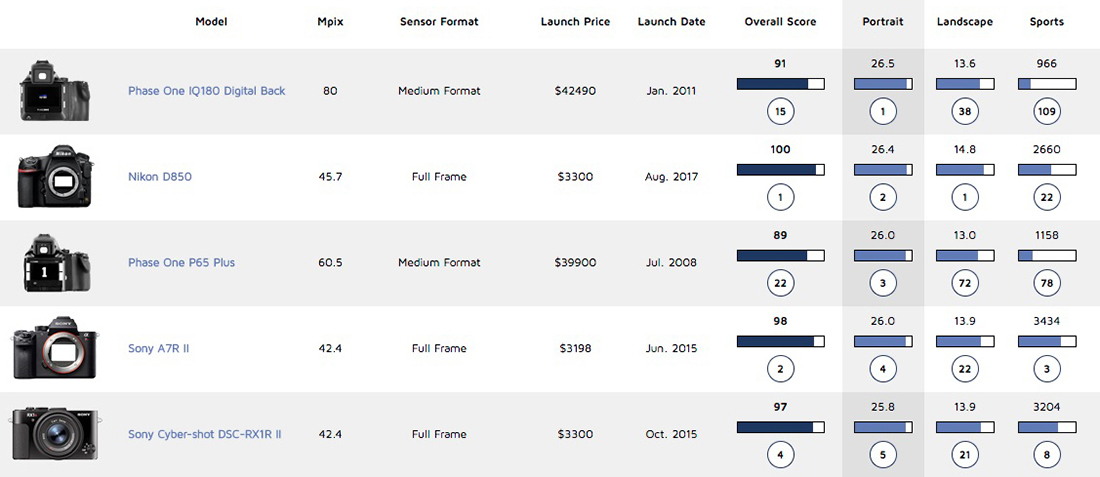
Click here to open our interactive DxOMark image sensor ranking tool
Although its low-light ISO performance (Sports score) doesn’t quite live up to its other high rankings, the D850’s score of ISO 2660 is very respectable. Packing such high resolution on a full-frame sensor, the Nikon D850 pixel pitch comes in around 4.35µm. That’s still good, but compared to a whopping 8.4µm on the lower 12.2Mp resolution full-frame Sony A7s, the D850 can’t match the signal-to-noise ratios at high ISOs that sensors with greater pitch offer. That said, with the Sports score based on an analysis of noise on unprocessed RAW files, photographers can be confident of low noise up to around ISO 3200 on the D850, and well beyond that with effective noise reduction in post-production.
Click here to open our interactive DxOMark image sensor ranking tool
In-depth comparisons
For a more detailed examination of sensor performance, our in-depth analysis takes a closer look at the Nikon D850’s scores, compared to the high-resolution full-frame competitors from Canon and Sony, as well from previous Nikon sensors.
Portrait (Color Depth)
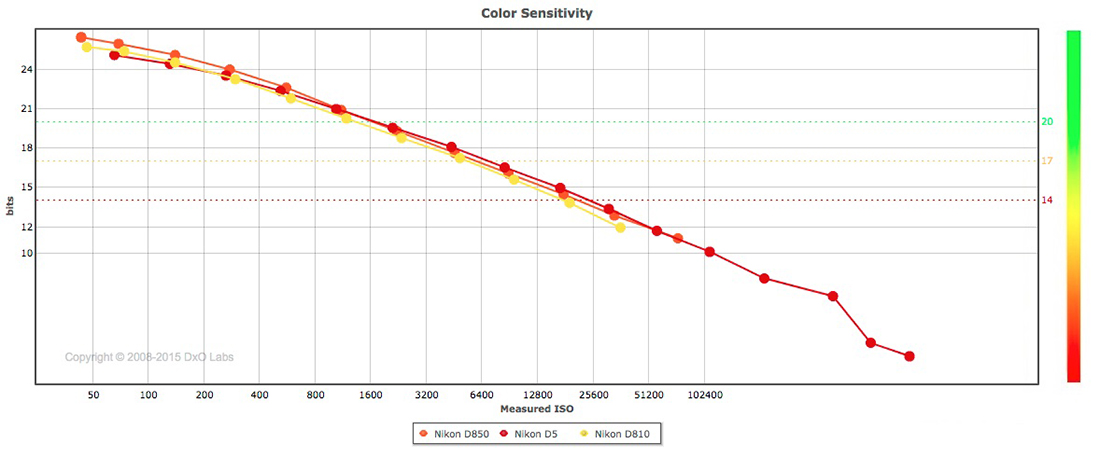
Using print results in which the image quality of different resolution sensors are normalized to a 8Mp 8×12” print at 300dpi for fair comparison, there is no discernable difference in color depth between the Nikon D850, the D810, and the D5 as ISO sensitivity is increased. All three sensors display excellent color (over 20 bits) up to ISO 1600, and very good color (over 17 bits) up to ISO 6400.
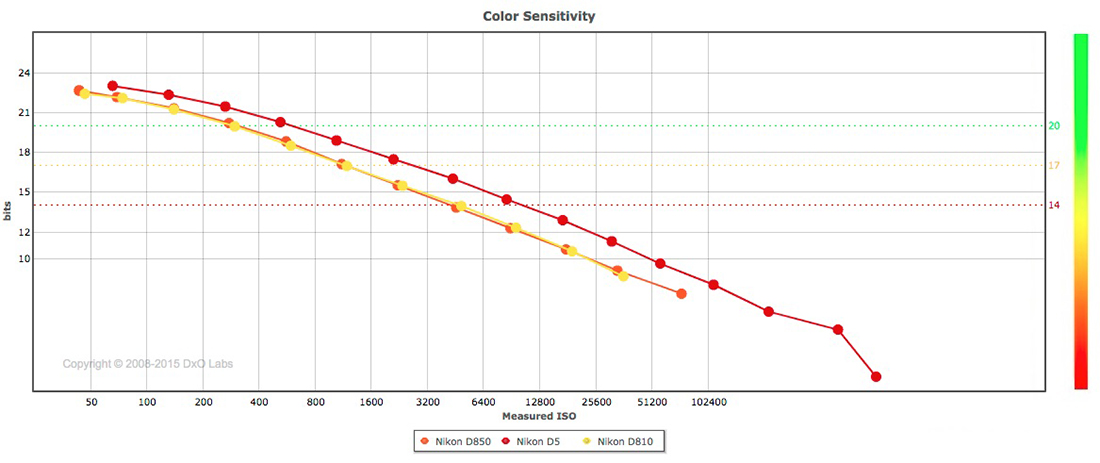
Viewing images on-screen, the lower-resolution D5 offers an advantage, particularly at mid to high ISO sensitivities, where it offers acceptable color of over 14 bits at 12,800, compared to ISO 6400 on the D850 and the D810, thus giving the D5 a one-stop advantage when viewing images electronically.
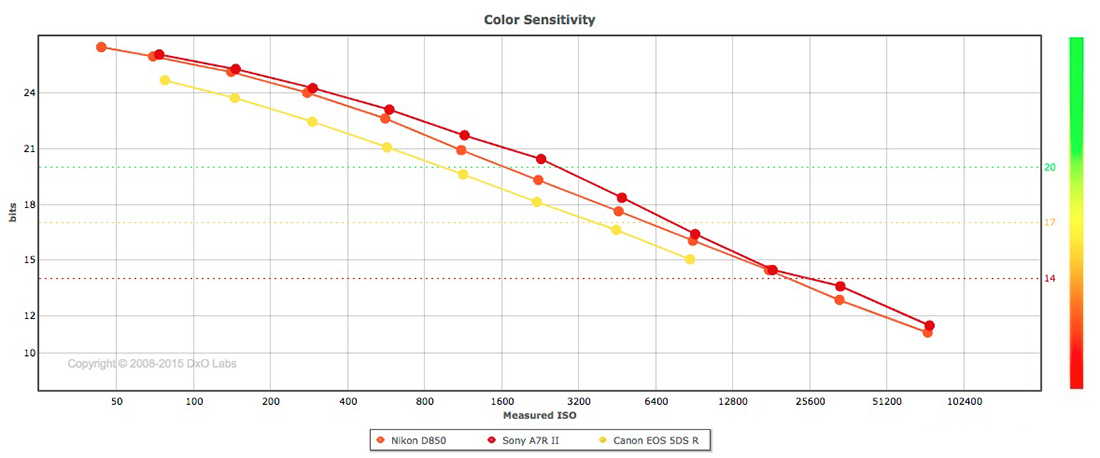
Differences in printed color are a little starker among the competitor high-resolution sensors, however. At lower ISOs, the Nikon D850 and Sony A7R II are pretty comparable up to ISO 400 and offer around a one-stop advantage over the Canon 5DS R, with color of 24 bits compared to 22.4 bits for the Canon. As sensitivity is increased, the Nikon D850 dips a little for color in the mid ISO range compared to the Sony, however. So while the 5DS R achieves excellent color of 19.3 bits at ISO 1600, you get the same color on the D850 at ISO 3200 and even better color (20.4 bits) on the Sony at ISO 3200.
Landscape (Dynamic Range)
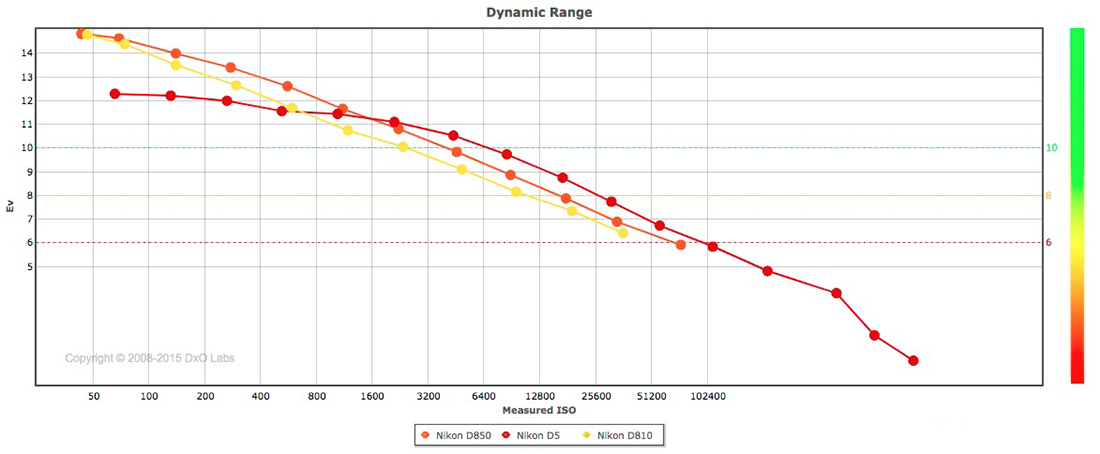
While the D850 and the D810 offer the same phenomenal dynamic range of 14.8 EV at base ISO, the D850’s BSI sensor helps it pull away a little as sensitivity is increased. This gives it a one-stop advantage at mid ISOs, recording around 11.6 EV at ISO 1600, compared to the same dynamic range on the D810 at ISO 800. The D5 doesn’t come close to competing for dynamic range at low ISOs, but the key strength of Nikon’s flagship DSLR are the mid to high sensitivities. So as sensitivity is increased, dynamic range stays fairly consistent on the D5 from 12.2 EV at ISO 100 to 11.1 EV at ISO 3200. This results in the same dynamic range on the D5 at ISO 3200 as the D850, which is a stop better than the D810.
A further boost for the D5 at higher ISOs means that good dynamic range of around 10 EV is possible up to 12,800 ISO on the D5, compared to 6400 ISO on the D850 and 3200 ISO on the D810. So if you’re looking for the best dynamic range at low ISOs for studio or landscape work, the D850 has the edge, but the D5 gives you more consistent results as sensitivity is increased and better dynamic range at the mid to high ISO settings.
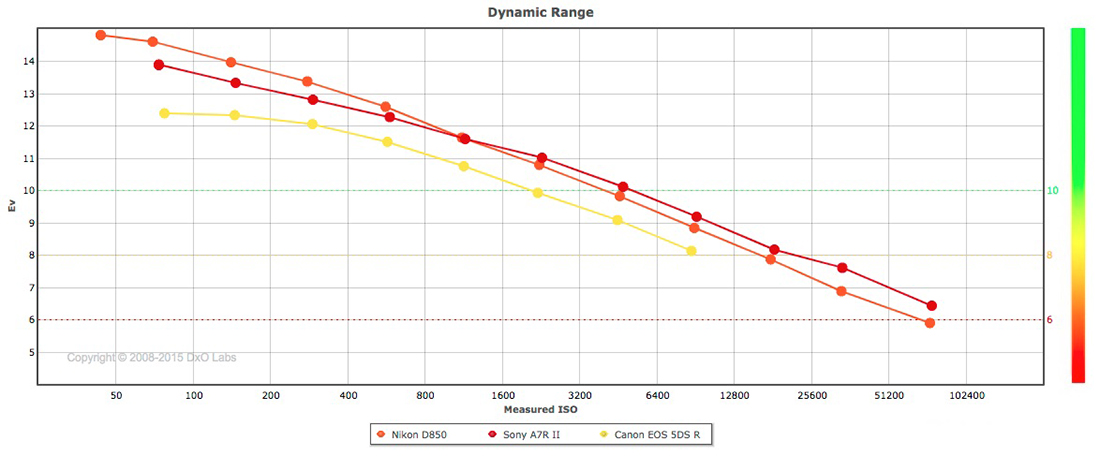
Against the Sony A7R II and Canon 5DS, the Nikon D850 offers an advantage at base ISO of around one stop against the Sony, and a massive 2.5-stop advantage over the Canon. The gaps narrow as sensitivity increases, though, so from ISO 1600 and above, the D850 and Sony A7R II offer broadly the same dynamic range, with the Sony just edging them. The Nikon and Sony both continue to offer around a one-stop advantage over the Canon for dynamic range between ISO 1600 and over the Canon 5DS’s top sensitivity of ISO 12,800. So good dynamic range above or around 10 EV is possible on the Sony and Nikon up to ISO 3200, compared to ISO 1600 for the Canon.
Sports (Low-Light ISO)
In printed results there is very little difference between these sensors in terms of signal-to-noise output. All five offer well-controlled noise with good SNR 18% ratios of around 32 dB up to ISO 3200.
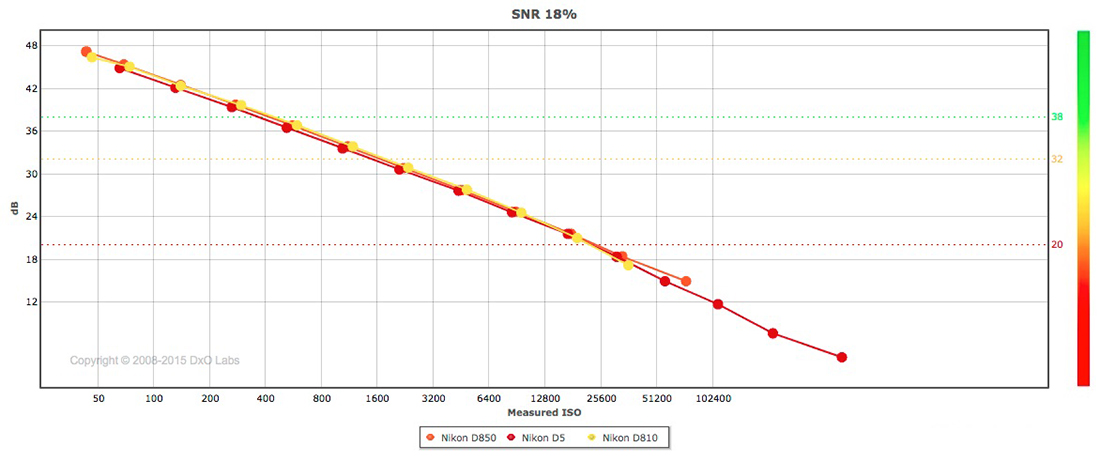
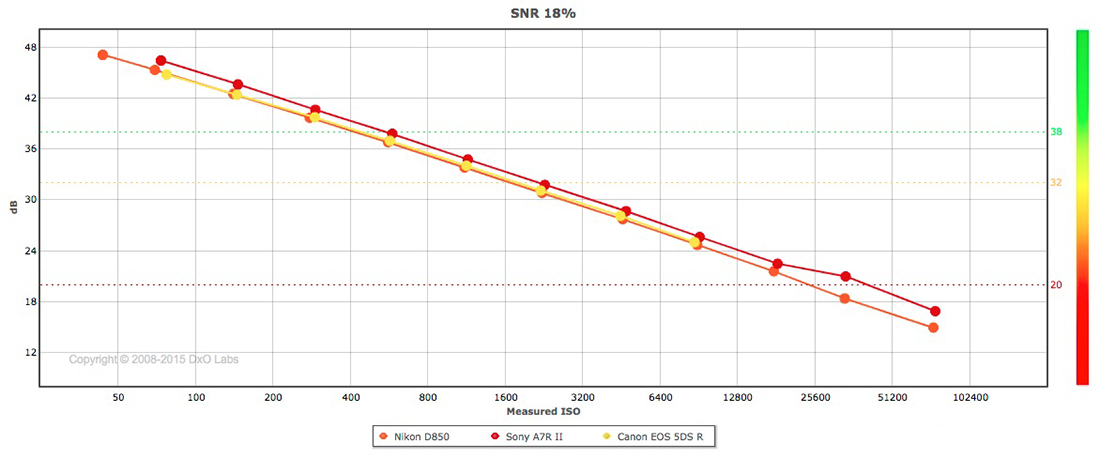
Conclusion
The introduction of the first BSI sensor in a full-frame Nikon DSLR with a super-high 45.7Mp resolution puts the Nikon D850’s image quality on par with, and often better than, medium-format cameras. The first DSLR to hit 100 points — rather apt for Nikon’s hundredth anniversary year — puts the Nikon D850 in a class of its own for image quality. At base ISO, it’s unrivaled for color in the DSLR class, and its headline dynamic range score is outstanding, too. Against the competitor high-resolution options from Sony and Canon, the D850 offers either better or close to comparable image quality throughout the ISO range. Although its headline ISO score doesn’t quite achieve the same lofty heights overall, it’s still a very capable performer at high ISO sensitivities, too. So if you’re looking for the best image quality at low ISOs, at significantly less cost than a digital medium-format camera, the Nikon D850 looks like the camera you’ve been waiting for.
In this review we have compared the Nikon D850 to its most direct rivals from other brands and among Nikon’s own lineup. As usual, you can create your own comparisons and in-depth analyses using our interactive image sensor ranking tool.


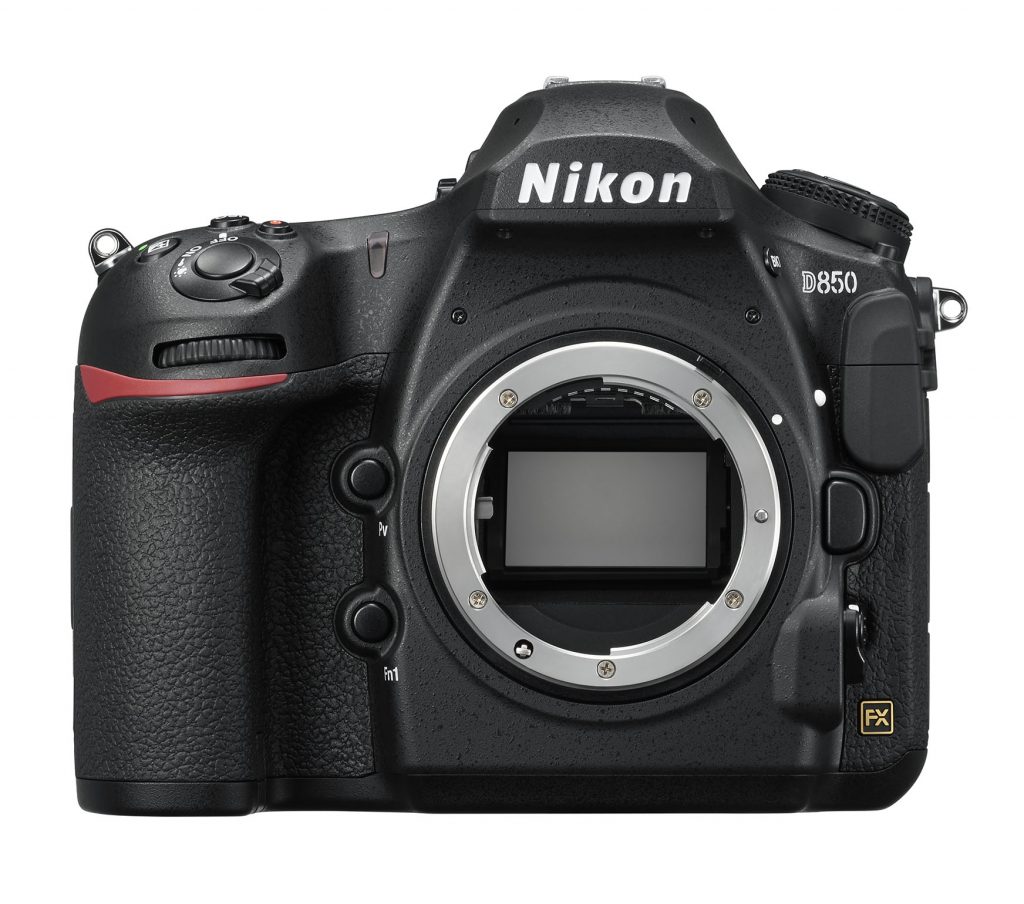


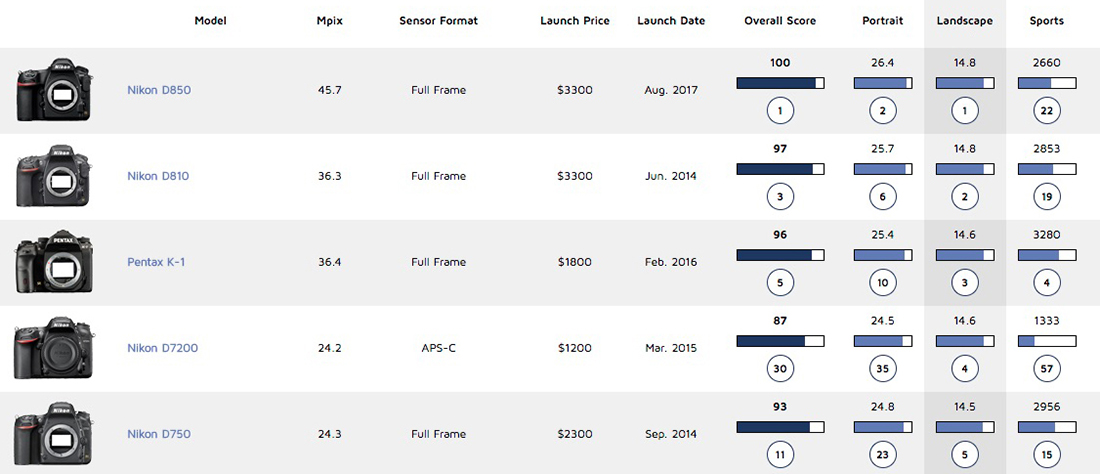



DXOMARK encourages its readers to share comments on the articles. To read or post comments, Disqus cookies are required. Change your Cookies Preferences and read more about our Comment Policy.